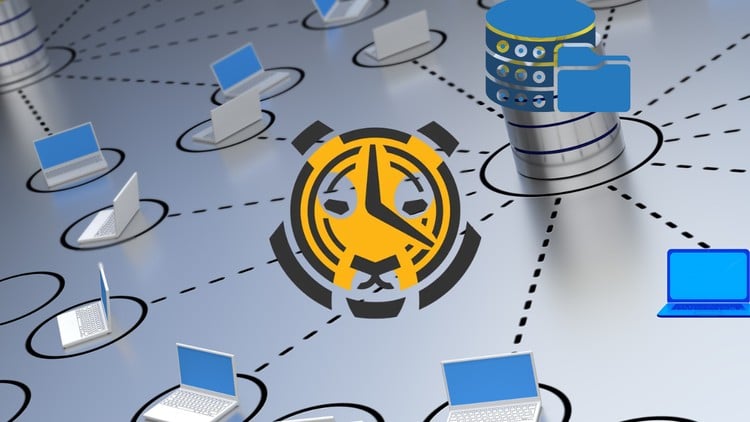
Learn to model, ingest, query, and visualize time-series data with TimescaleDB and Grafana through real-world projects.
⏱️ Length: 8.6 total hours
👥 142 students
🔄 October 2025 update
Add-On Information:
Note➛ Make sure your 𝐔𝐝𝐞𝐦𝐲 cart has only this course you're going to enroll it now, Remove all other courses from the 𝐔𝐝𝐞𝐦𝐲 cart before Enrolling!
-
Course Overview
- This course offers a comprehensive exploration of TimescaleDB, the leading open-source relational database specifically engineered for time-series data, building upon PostgreSQL’s robust foundation. It’s tailored for developers, data engineers, and analysts focused on building high-performance, scalable applications for critical temporal datasets across industries like IoT, finance, and DevOps.
- You will master sophisticated time-series management, understanding how TimescaleDB intelligently optimizes PostgreSQL with features like automatic partitioning, advanced data retention, and specialized aggregation functions. The curriculum blends essential theory with extensive hands-on practice, guiding you through exercises that replicate real-world challenges.
- Gain proficiency in leveraging TimescaleDB’s unique features to optimize query performance on vast historical data and ensure high data integrity. Discover how integrating TimescaleDB with Grafana transforms raw data into actionable insights, enabling dynamic dashboards and alerts for stakeholders.
-
Requirements / Prerequisites
- A solid foundational understanding of SQL (Structured Query Language) is essential, encompassing basic DML operations and common data types.
- Familiarity with core relational database concepts, including tables, schemas, and key constraints, will provide a strong basis for understanding TimescaleDB’s architecture and data modeling.
- Comfort using the command line or terminal on your preferred operating system (Linux, macOS, or Windows) is beneficial for interacting with database tools and services.
- An eagerness to explore new database technologies and data visualization techniques is key.
- Access to a computer with administrative privileges to install necessary software (PostgreSQL, TimescaleDB, Docker Desktop, Grafana) for local setup, or the ability to utilize cloud provider accounts for cloud-based deployment.
-
Skills Covered / Tools Used
- Advanced Time-Series SQL: Master specialized SQL functions including gap-filling, interpolation, sampling, and complex window functions to extract deep insights, perform trend analysis, and detect anomalies in temporal datasets.
- Hypertables & Continuous Aggregates: Expertise in designing and optimizing hypertables, TimescaleDB’s core abstraction for automatic time-series partitioning. Leverage continuous aggregates for real-time rollups and materialized views, dramatically accelerating queries on large datasets.
- Data Lifecycle Management: Implement intelligent data retention, compression strategies, and data tiering to balance performance, storage costs, and compliance for vast historical time-series data.
- Performance Tuning & Optimization: Deepen knowledge of TimescaleDB-specific performance bottlenecks. Learn advanced techniques: efficient indexing for temporal and categorical data, query plan analysis, and connection pooling for high-throughput applications.
- Real-time Ingestion Patterns: Understand TimescaleDB’s integration within real-time data ecosystems, exploring patterns for ingesting data from message queues (e.g., Kafka) or real-time APIs using various client libraries.
- Grafana Dashboards & Alerting: Develop dynamic, interactive dashboards in Grafana, connecting directly to TimescaleDB. Construct custom queries, configure diverse panel types, and set up proactive alerts based on time-series thresholds for immediate operational visibility.
- PostgreSQL Ecosystem Integration: Leverage the vast PostgreSQL ecosystem, understanding how TimescaleDB seamlessly integrates with standard PostgreSQL tools for robust backup, replication, and monitoring practices.
-
Benefits / Outcomes
- Architect Scalable Solutions: Design and implement highly scalable, performant time-series data architectures capable of handling millions of data points per second for data-intensive applications.
- Unlock Advanced Insights: Confidently extract complex insights from time-series data using sophisticated SQL queries and analytics, enabling predictive capabilities, trend identification, and pattern recognition.
- Optimize Resource Utilization: Significantly reduce storage costs and improve query speeds through TimescaleDB’s compression and continuous aggregate features, ensuring efficient resource management.
- Build Interactive Monitoring: Construct robust monitoring and visualization systems with Grafana, providing real-time operational awareness and empowering stakeholders with actionable dashboards and timely alerts.
- Enhance Career Prospects: Gain a highly sought-after skillset in time-series data management, making you a valuable asset across industries like IoT, FinTech, and DevOps.
- Master Open-Source Stack: Become proficient with a best-of-breed open-source stack (TimescaleDB + PostgreSQL + Grafana), equipping you to build enterprise-grade data solutions.
-
PROS
- PostgreSQL Compatibility: Leverages the familiarity, robustness, and extensive ecosystem of PostgreSQL, reducing the learning curve for existing PostgreSQL users.
- Exceptional Performance: Engineered specifically for time-series, offering superior ingestion rates and query performance compared to generic relational databases for temporal data.
- Scalability Features: Provides built-in features like automatic partitioning, compression, and continuous aggregates that are essential for managing petabytes of data efficiently.
- Open-Source Flexibility: Offers the freedom and transparency of an open-source solution, backed by an active community and ongoing development.
- Real-World Applicability: Directly applicable to a wide range of modern industries and use cases, from IoT sensor data to financial market analytics.
-
CONS
- Niche Focus: While powerful for time-series, its specialized nature means it might not be the optimal choice for general-purpose transactional or highly unstructured data workloads.
Learning Tracks: English,Development,Database Design & Development
Found It Free? Share It Fast!